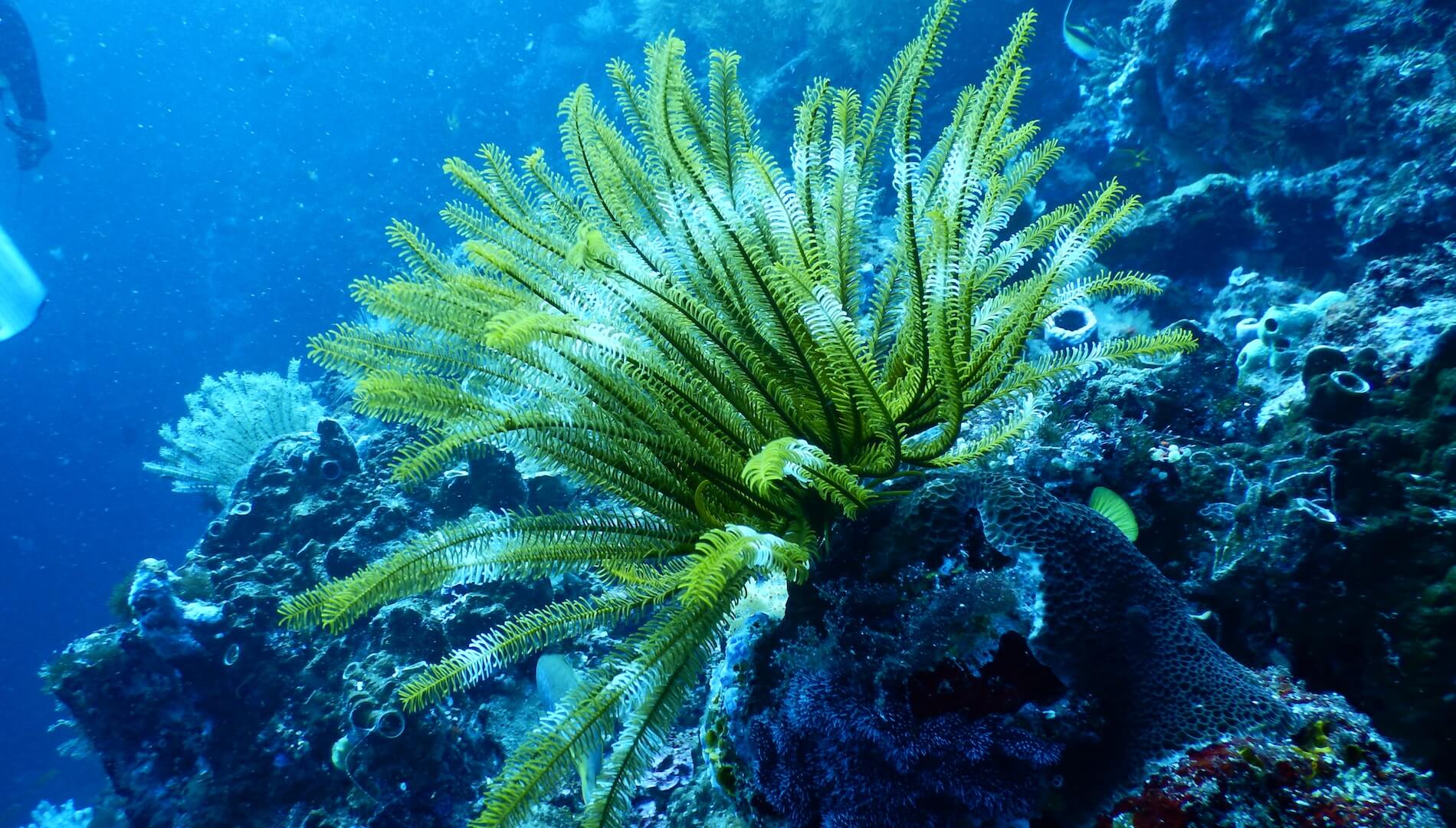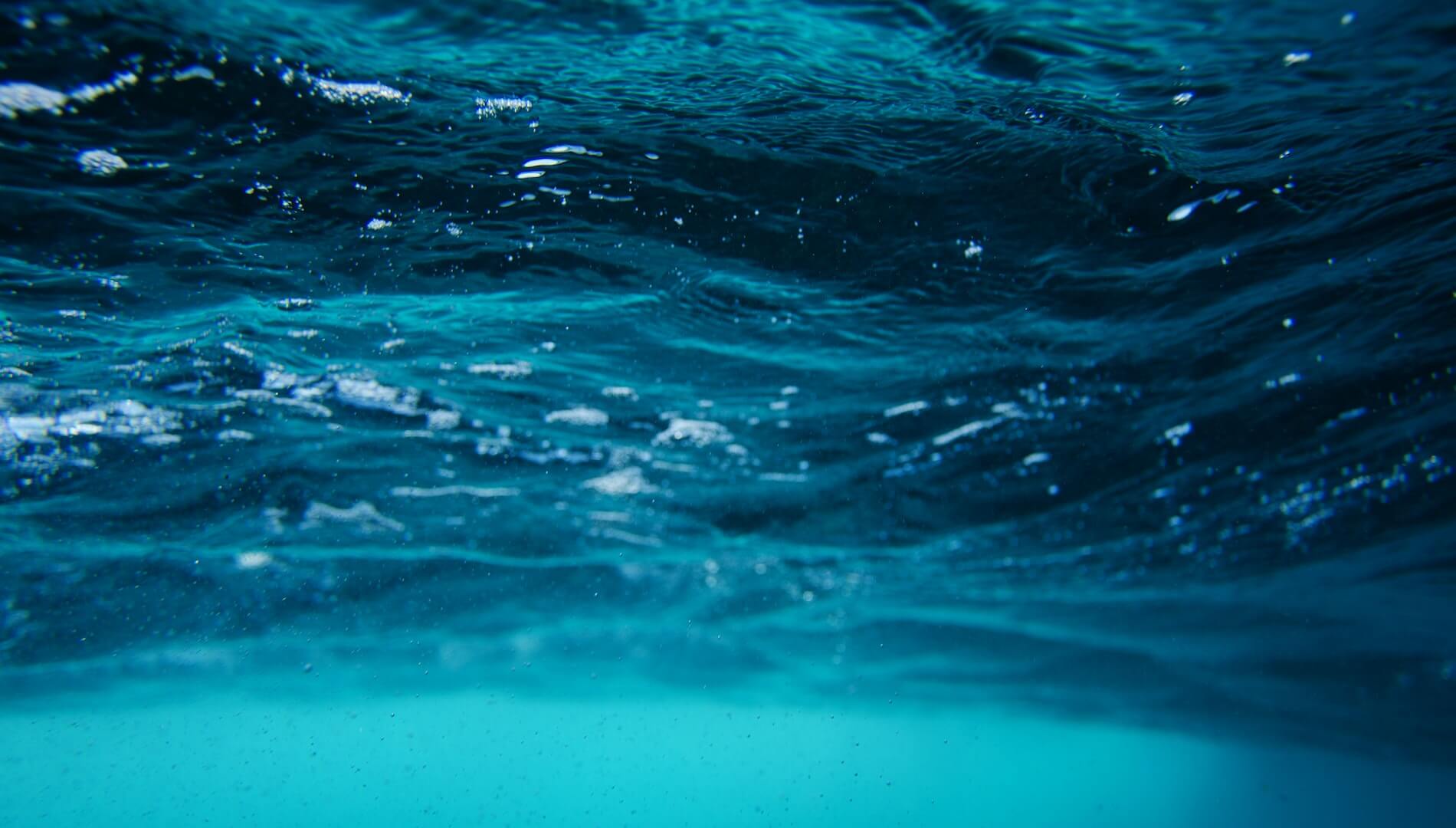The ocean is a vast, eerie, and mysterious place, covering more than 70 percent of the Earth’s surface. Despite the fact that we have explored only a small percentage of its depths, the ocean remains a source of fascination and wonder for many of us. With its many uncharted areas and its vast array of sea creatures, the ocean is filled with mysteries waiting to be uncovered. From the vibrant coral reefs to the dark depths of the abyss, the ocean is home to some of the most interesting creatures on earth, and it’s our job to explore and learn more about them. In this post, we’ll be exploring some of the wonders of the ocean, from the creatures that live there to the fascinating geological formations that can be found deep beneath the waves. Join us as we dive into the mysteries of the deep and discover the secrets of the ocean.
Introduction to the vastness and mysteries of the ocean
The vastness of the ocean is truly awe-inspiring. Covering more than 70% of the Earth’s surface, the ocean holds countless wonders and mysteries waiting to be discovered. Its depths are home to a myriad of fascinating creatures, some of which have yet to be fully studied or even identified.

The ocean’s mysteries are not limited to its depths. From the powerful currents that flow beneath the surface to the mesmerizing bioluminescence that illuminates the night, there is a captivating beauty that lies within its vast expanse. Explorers and scientists have only scratched the surface of what the ocean has to offer, leaving much more to be explored and understood.
One of the most intriguing aspects of the ocean is its ability to sustain an incredible diversity of life. From the smallest microscopic organisms to the largest creatures on Earth, the ocean is teeming with a complex web of interconnected ecosystems. Coral reefs, kelp forests, and deep-sea trenches are just a few examples of the remarkable habitats that support a wide array of marine species.
Yet, despite its importance and vastness, the ocean remains largely unexplored. Only a small percentage of its depths have been thoroughly investigated, leaving the majority of its mysteries still waiting to be unraveled. With advancements in technology and a growing interest in marine conservation, scientists and explorers are increasingly focused on unlocking the secrets of the deep.
The importance of the ocean ecosystem
One of the most crucial aspects of the ocean ecosystem is its role in regulating the Earth’s climate. The ocean acts as a massive heat sink, absorbing and storing vast amounts of heat from the sun. It also plays a significant role in the global water cycle by evaporating water into the atmosphere, which eventually falls back to the Earth as rain, replenishing our freshwater supplies.
Beyond its climate-regulating capabilities, the ocean ecosystem is teeming with life that contributes to the overall balance of our planet. Phytoplankton, for example, are microscopic plants that inhabit the upper layers of the ocean and are responsible for producing about half of the world’s oxygen. These tiny organisms form the foundation of the marine food chain, supporting the survival of countless marine species.
Additionally, the ocean ecosystem acts as a natural carbon sink, absorbing a substantial amount of carbon dioxide from the atmosphere. This process helps mitigate the effects of greenhouse gas emissions and climate change. Coral reefs, often referred to as the “rainforests of the sea,” are particularly important in this regard, as they provide a habitat for a plethora of marine life while also protecting coastal areas from erosion and storm damage.
Unfortunately, the ocean ecosystem is facing numerous threats. Climate change, pollution, overfishing, and habitat destruction are wreaking havoc on this delicate balance of life. The loss of biodiversity in the ocean not only affects marine species but also impacts human communities that rely on the ocean for food, livelihoods, and recreation.
Uncovering the secrets of the deep sea
The deep sea has always held an air of mystery and intrigue. Its vastness and depths remain largely unexplored, leaving us with countless secrets yet to be uncovered. Scientists and researchers have embarked on expeditions to delve into the abyss, unveiling fascinating discoveries that challenge our understanding of the ocean and its inhabitants.

One of the most astonishing revelations is the existence of bioluminescent organisms that illuminate the darkness of the deep sea. These mesmerizing creatures emit their own light, creating an ethereal spectacle that seems otherworldly. From tiny plankton to colossal squids, bioluminescence plays a vital role in their survival, acting as a form of communication, camouflage, or hunting strategy.
Another enigma lies in the remarkable adaptability of deep-sea organisms. In this extreme environment, with crushing pressures and limited resources, life has found ingenious ways to thrive. From bizarre creatures with elongated bodies and transparent skin to species that possess extraordinary abilities to withstand extreme temperatures and lack of sunlight, the deep sea is a testament to the resilience and diversity of life on our planet.
Exploration of the deep sea has also led to the discovery of hydrothermal vents, where hot, mineral-rich fluids gush out from beneath the Earth’s crust. These vents create unique ecosystems that support a variety of peculiar organisms, including giant tube worms and blind shrimp. These communities rely on chemosynthesis, a process where bacteria convert chemicals from the vents into energy, rather than relying on sunlight like most other life forms on Earth.
Furthermore, the deep sea holds clues to our planet’s past and its potential future. By studying sediment cores and geological formations found in the depths, scientists can unravel the history of Earth’s climate, identify past extinctions, and gain insights into the effects of climate change. The secrets hidden within these layers of sediment offer us a glimpse into the complex interplay between the oceans, atmosphere, and life itself.
Biodiversity and unique marine life
From the smallest microorganisms to the largest creatures known to exist, the diversity of marine species is truly awe-inspiring.
One of the most fascinating aspects of the ocean is the abundance of species that call it home. It is estimated that over one million species inhabit the depths of the ocean, with countless more yet to be discovered. Each of these species plays a vital role in maintaining the delicate balance of the marine ecosystem.
From the vibrant coral reefs of the tropics to the frigid waters of the Arctic, each region of the ocean offers its own distinct and mesmerizing array of marine life. In the coral reefs, you will find a kaleidoscope of colors as fish of all shapes and sizes dart among the vibrant corals. In the open ocean, graceful creatures such as whales and dolphins gracefully glide through the water, their majestic presence a testament to the wonders of nature.
One of the most unique aspects of marine life is its ability to adapt and survive in extreme conditions. From the bioluminescent creatures that light up the darkest depths of the ocean to the deep-sea organisms that thrive in the crushing pressure and complete darkness, these resilient beings showcase the incredible resilience and adaptability of life itself.
Exploring underwater ecosystems: coral reefs, kelp forests, and more
Beneath the surface lies a realm of vibrant colors, diverse marine life, and breathtaking ecosystems. Exploring underwater ecosystems is like venturing into a whole new dimension, where coral reefs, kelp forests, and other mesmerizing habitats exist.

Coral reefs, often referred to as the rainforests of the sea, are teeming with life and beauty. These underwater cities are built by tiny coral polyps, which form intricate structures that provide shelter and a vital habitat for countless marine species. The vibrant colors of the coral, ranging from vivid blues and greens to striking reds and oranges, create a stunning underwater landscape. Swimming amidst these coral formations feels like entering a surreal world, where fish dart in and out of crevices, and sea turtles gracefully glide by.
Kelp forests, on the other hand, offer a completely different underwater experience. These towering underwater forests are formed by long, leafy strands of kelp that rise from the ocean floor towards the sunlight above. As sunlight filters through the water, illuminating the kelp fronds, a magical ambiance is created. Swimming through a kelp forest feels like floating through a mystical forest, with sunlight dancing on the water’s surface and sea creatures weaving their way through the swaying kelp blades. It’s a unique and awe-inspiring experience that leaves a lasting impression on those fortunate enough to witness it.
But coral reefs and kelp forests are just the beginning. The ocean is home to countless other fascinating underwater ecosystems, each with its own enchanting allure. From seagrass meadows that provide essential nurseries for juvenile marine life to deep-sea hydrothermal vents that harbor bizarre and otherworldly creatures, the diversity of underwater ecosystems is truly astounding.
Exploring these underwater ecosystems not only offers a glimpse into the wonders of nature but also highlights the importance of protecting and preserving these delicate environments. They are not just beautiful, but also crucial for the balance of marine life and the overall health of our planet.
The wonders of bioluminescence and its role in the ocean
Bioluminescence, the enchanting natural phenomenon that illuminates the darkest depths of the ocean, continues to captivate scientists and explorers alike. It is a mesmerizing display of nature’s brilliance, revealing the hidden wonders of the underwater world.
In the depths of the ocean, where sunlight struggles to penetrate, bioluminescence takes center stage. Countless marine organisms possess the unique ability to produce and emit light, creating a surreal and ethereal spectacle. From microscopic plankton to larger predators, these bioluminescent creatures illuminate their surroundings, turning the deep-sea into a celestial playground.
So, what exactly causes this enchanting display of light? The answer lies in the complex biochemical reactions within the organisms themselves. Bioluminescent organisms contain specialized cells called photophores that house luciferin, a light-producing molecule. When triggered by certain stimuli, such as movement or disturbance in the water, these cells release luciferin, resulting in a radiant glow.
Bioluminescence serves various purposes in the ocean ecosystem. For some species, it acts as a defense mechanism, allowing them to startle or confuse predators by emitting sudden bursts of light. Others use bioluminescence as a means of communication, signaling potential mates or warning rivals. In the darkest depths, where the absence of light is pervasive, bioluminescence becomes a crucial survival tool, enabling organisms to navigate, hunt, and avoid danger.
The diversity of bioluminescent organisms is astonishing. From the mesmerizing glow of dinoflagellates, creating shimmering trails in the wake of a passing boat, to the haunting allure of deep-sea anglerfish, luring prey with their bioluminescent lures, the ocean is filled with an otherworldly radiance.
Exploring the mysteries of bioluminescence has not only provided insights into the fascinating adaptations of marine life but has also inspired technological advancements in various fields. Scientists have been studying these organisms, aiming to replicate their light-producing abilities for medical research, environmental monitoring, and even artistic endeavors.
The impact of human activities on the ocean
From pollution to overfishing, our actions have far-reaching consequences for marine life and the delicate balance of the ocean. One of the most prominent examples is plastic pollution. Every year, millions of tons of plastic waste find their way into the ocean, causing immense harm to marine animals and ecosystems. From entanglement to ingestion, marine creatures suffer greatly from our careless disposal of plastic.

Another significant concern is overfishing. As the demand for seafood increases, unsustainable fishing practices have depleted fish populations and disrupted marine food chains. This not only affects the livelihoods of fishing communities but also threatens the biodiversity and stability of the ocean ecosystem.
Furthermore, the burning of fossil fuels and the subsequent release of greenhouse gases have led to ocean acidification and rising sea temperatures. These changes have severe consequences for marine organisms, such as coral bleaching and the loss of habitat for countless species.
It is crucial for us to recognize the impact of our actions and take steps to protect and preserve the ocean. This can be done through sustainable fishing practices, reducing plastic waste, advocating for stricter environmental regulations, and supporting initiatives that promote conservation and restoration efforts.
Conservation efforts and the future of the ocean
Conservation efforts and the future of the ocean are of paramount importance as we strive to protect and preserve the wonders that lie beneath the surface. With increasing human activities and the impacts of climate change, our oceans are facing unprecedented challenges. However, there is still hope.
Numerous organizations, scientists, and individuals are dedicated to the cause of ocean conservation. They work tirelessly to raise awareness about the fragility of marine ecosystems and advocate for sustainable practices. Through initiatives such as marine protected areas, habitat restoration projects, and the promotion of responsible fishing practices, significant strides are being made to safeguard the ocean’s biodiversity.
One key aspect of ocean conservation is the reduction of plastic pollution. Plastic waste is a pervasive problem that threatens marine life, as animals often mistake it for food or become entangled in it. Efforts to curb plastic consumption, promote recycling, and develop eco-friendly alternatives are crucial in addressing this issue and protecting the delicate balance of marine ecosystems.
Another area of concern is the impact of climate change on the ocean. Rising temperatures, ocean acidification, and coral bleaching are just a few of the consequences that have detrimental effects on marine life. It is essential to mitigate greenhouse gas emissions, support renewable energy sources, and promote sustainable practices on a global scale to minimize the long-term impacts on our oceans.
Education and awareness play a vital role in shaping the future of the ocean. By educating ourselves and future generations about the importance of ocean conservation, we can foster a sense of stewardship and inspire action. Teaching sustainable practices, promoting responsible tourism, and encouraging individuals to make conscious choices in their daily lives can collectively make a significant difference.
Tips for exploring and appreciating the ocean responsibly
Here are some essential tips to consider when diving into the mysteries of the deep:
1. Respect marine life:
Treat marine life with utmost respect and admiration. Avoid touching, feeding, or disturbing the creatures you encounter. Remember, you are entering their home, and it is vital to minimize any negative impact on their natural behaviors and habitats.
2. Practice proper buoyancy control:
Mastering buoyancy control is not only important for your safety but also for protecting delicate marine ecosystems. Avoid touching or damaging coral reefs, as they provide essential habitats for numerous species. Maintain neutral buoyancy to avoid unintentional damage caused by accidental contact.
3. Leave no trace:
Always adhere to the principle of “Leave no trace” when exploring the ocean. Do not discard any waste or litter into the water, as it can harm marine life and disrupt the fragile balance of the ecosystem. Properly dispose of any garbage or bring it back with you.
4. Choose eco-friendly products:
When selecting diving or snorkeling equipment, opt for eco-friendly alternatives. Avoid sunscreen containing harmful chemicals like oxybenzone, which can harm coral reefs. Look for reef-safe sunscreen options that protect your skin without causing damage to the underwater environment.
5. Support sustainable tourism:
When participating in ocean-related activities, choose responsible tour operators and organizations that prioritize sustainability and environmental conservation. By supporting eco-conscious businesses, you contribute to preserving the ocean’s wonders for future generations.
6. Educate yourself and others:
Take the time to learn about marine conservation and the challenges faced by our oceans. Stay informed about local regulations, protected areas, and marine life guidelines. Share your knowledge with others to raise awareness and promote responsible ocean exploration.
Conclusion
The mysteries and beauty of the deep sea have captivated humans for centuries, and we are fortunate to have the opportunity to learn and discover more about this fascinating realm. From vibrant coral reefs to elusive deep-sea creatures, the ocean holds countless wonders waiting to be explored. Whether you are a marine enthusiast or simply curious about the mysteries that lie beneath the waves, we encourage you to continue your journey of discovery and appreciation for the ocean’s wonders. Remember, the ocean covers more than 70% of our planet, so there is always something new and awe-inspiring to learn about. Dive in and let the wonders of the ocean enchant and amaze you.



